Photo
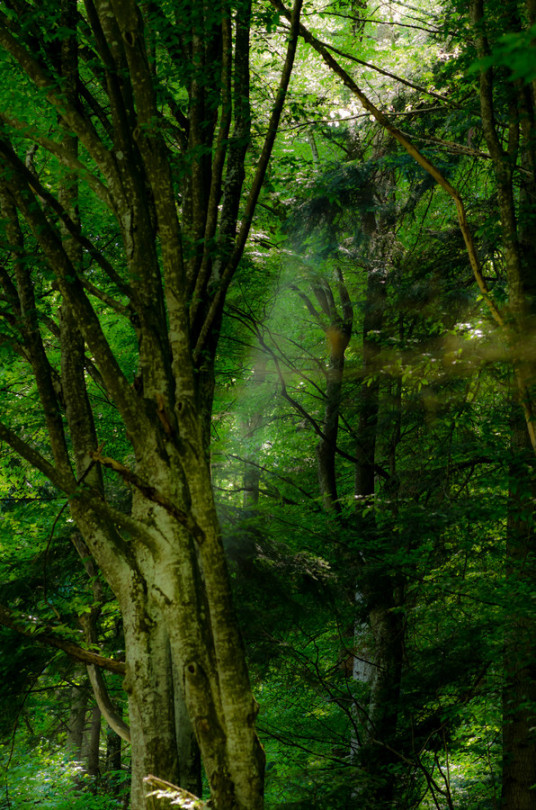
Slanic-Moldova, Romania
Forest Fairy by Eugen Vasilache
2K notes
·
View notes
Photo

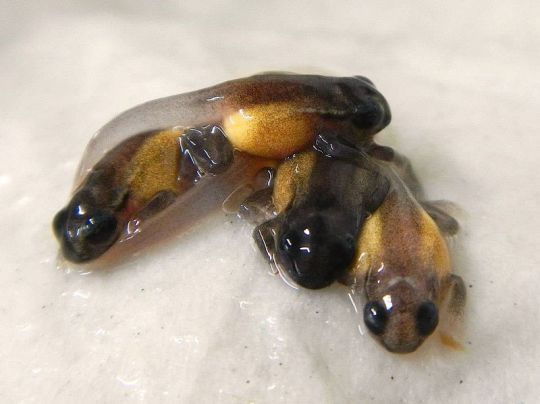

For the first time ever, Archey’s Frogs have been successfully bred in captivity. Aukland Zoo is the only facility in the world to keep this critically endangered New Zealand species.
Laid in October, the eggs hatched in early December. Twice before, other facilities had attempted to breed Archey’s Frogs from wild-caught individuals, but the young did not survive to adulthood. Aukland Zoo now has seven healthy young frogs, bred from their own long-term captive population.
Sometimes describes as a living fossil, Archey’s Frogs as a species are over 50 million years old. Like three other species endemic to New Zealand, they do not undergo the typical tadpole-to-frog metamorphosis. Instead, they develop limbs inside the egg and hatch out as almost fully-developed frogs with tails and yolk sacs.
According to the IUCN, about one third of the world’s amphibian species are threatened with extinction. Found only in New Zealand, critically endangered Archey’s Frogs are threatened by habitat disturbance, intoduced predators and diseases, and by climate change. Captive breeding of Archey’s Frogs is vitally important for conservation. Says Professor Jonathan Baillie of the Zoological Society of London, “Breeding one of the most primitive and threatened species on the planet is an amazing achievement and a major breakthrough for conservation”.
Photo credit: Aukland Zoo (via Aukland Zoo Breeds Critically Endangered Archey’s Frogs - ZooBorns)
584 notes
·
View notes
Photo

Antarctic’s first whale skeleton found
The remains are thought to have been on the seafloor for several decades, and been host to new species of snails, worms and crustaceans.
129 notes
·
View notes
Photo
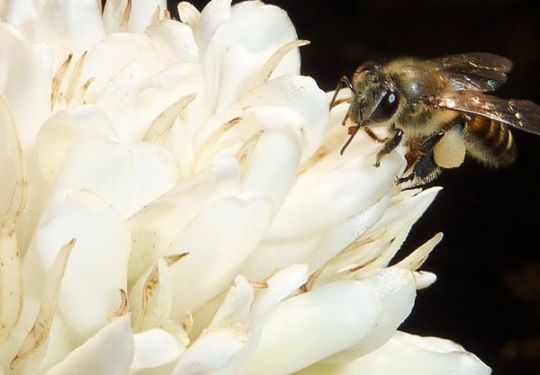
Bees get a buzz from caffeine
You may need a cup of coffee to kick start the day but it seems honeybees also get their buzz from drinking flower nectar containing caffeine.
Publishing in Science, researchers have shown that caffeine improves a honeybee’s memory and could help the plant recruit more bees to spread its pollen.
In tests honeybees feeding on a sugar solution containing caffeine, which occurs naturally in the nectar of coffee and citrus flowers, were three times more likely to remember a flower’s scent than those feeding on just sugar.
Study leader Dr Geraldine Wright, Reader in Neuroethology at Newcastle University, explained that the effect of caffeine benefits both the honeybee and the plant: “Remembering floral traits is difficult for bees to perform at a fast pace as they fly from flower to flower and we have found that caffeine helps the bee remember where the flowers are.
“In turn, bees that have fed on caffeine-laced nectar are laden with coffee pollen and these bees search for other coffee plants to find more nectar, leading to better pollination.
“So, caffeine in nectar is likely to improve the bee’s foraging prowess while providing the plant with a more faithful pollinator.”
In the study, researchers found that the nectar of Citrus and Coffea species often contained low doses of caffeine. They included ‘robusta’ coffee species mainly used to produce freeze-dried coffee and ‘arabica’ used for espresso and filter coffee. Grapefruit, lemons, pomelo and oranges were also sampled and all contained caffeine.
Co-author Professor Phil Stevenson from the Royal Botanic Gardens, Kew and the University of Greenwich’s Natural Resources Institute said: “Caffeine is a defence chemical in plants and tastes bitter to many insects including bees so we were surprised to find it in the nectar. However, it occurs at a dose that’s too low for the bees to taste but high enough to affect bee behaviour.”
The effect of caffeine on the bees’ long-term memory was profound with three times as many bees remembering the floral scent 24 hours later and twice as many bees remembering the scent after three days.
Typically, the nectar in the flower of a coffee plant contains almost as much caffeine as a cup of instant coffee. Just as black coffee has a strong bitter taste to us, high concentrations of caffeine are repellent to honeybees.
Dr Wright added: “This work helps us understand the basic mechanisms of how caffeine affects our brains. What we see in bees could explain why people prefer to drink coffee when studying.”
Dr Julie Mustard, a contributor to the study from Arizona State University, explains further: “Although human and honeybee brains obviously have lots of differences, when you look at the level of cells, proteins and genes, human and bee brains function very similarly. Thus, we can use the honeybee to investigate how caffeine affects our own brains and behaviours.”
This project was funded in part by the Insect Pollinators Initiative which supports projects aimed at researching the causes and consequences of threats to insect pollinators and to inform the development of appropriate mitigation strategies.
Population declines among bees have serious consequences for natural ecosystems and agriculture since bees are essential pollinators for many crops and wild flowering species. If declines are allowed to continue there is a risk to our natural biodiversity and on some crop production.
Professor Stevenson said: “Understanding how bees choose to forage and return to some flowers over others will help inform how landscapes could be better managed. Understanding a honeybee’s habits and preferences could help find ways to reinvigorate the species to protect our farming industry and countryside.”
76 notes
·
View notes
Photo

Dita Von Teese. In a 3D-printed dress. The future is here, and it’s looking fine.
(↬ @curiousoctopus)
265 notes
·
View notes
Photo

3 Theological Perspectives on Heaven, Hell and Limbo
54 notes
·
View notes
Photo

Syria Two Years On: The Failure of International Aid So Far
Since the first protests broke out in Syria in March 2011, the country has spiralled into all-out war. After two years of an extremely violent conflict which has resulted in more than 70,000 dead according to the United Nations, the Syrian people are faced with a humanitarian catastrophe.
Read this report to learn more about how conflict has put the healthcare system in jeopardy. Despite repeated requests, MSF has not received permission from the government to work in the country, but has been able to open three hospitals in the opposition-held areas in the north where assistance remains well below the level of the needs.
190 notes
·
View notes
Photo

“The Walking Dead” by Ale Giorgini
341 notes
·
View notes
Photo

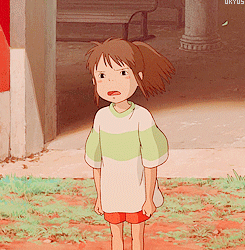

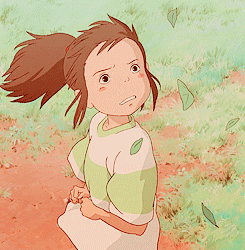
Otou-san, Okaa-san… Let’s get out of here, this place is dangerous!
9K notes
·
View notes












